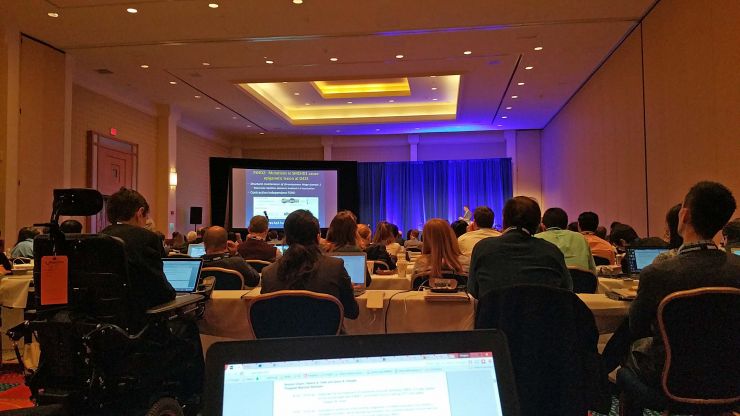Posted by Gregory J Block MSc PhD on Mar 17, 2015

The best part of a scientific conference is meeting the people who care about the same things that you do. We might be complete strangers, but we are all bound by training and a mission. Gathering around a table at lunch, conversation is easy - and it’s out of these conversations that ideas are born, lessons are learned, and collaborations are formed. With people attending from all over the world, these events are truly the yarn that knit together the research community.
Scientists met in the nation’s capital for the Muscular Dystrophy Association (MDA) scientific conference last week. It’s the MDA’s first conference since the organization updated their strategic plan to increase focus on developing therapeutics for muscular dystrophies.
Since the MDA focuses on nearly all muscle diseases, they have a big role to play in development of therapeutics, patient support, and engaging in advocacy to ensure potential therapeutics get to market. They have a cross-disease perspective on the status of research, development of therapeutics, and, like the NIH, are critical in sustaining careers of scientists.
As the MDA works to fund the right science, they rely on and benefit from highly-specialized research programs of disease-specific non-profits like Friends of FSH Research. And we intend to deliver. By adhering to our commitment to fund transparent, innovative, real-time science, our organization is committed to working with all other funders of medical research to accelerate the progress towards a cure for FSHD.
Critical findings
An important overall message came out of the four talks on FSHD presented at the conference: we have made great strides in our understanding of FSHD. Right now, however, the barriers preventing scientists from doing FSHD research are high. The disease genetics are extremely complicated, and funding is scarce. But when researchers have adequate resources and the chance to share their findings, we can engage more people and foster more collaboration - ultimately accelerating research.
Talks by Dr. Daniel Miller, Dr. Scott Harper (and his graduate student), and Dr. Michael Kyba clearly showed that over the last few years we have developed a consensus regarding the genetic cause of FSHD, created multiple animal models for the disease, and are now starting to understand some of the nuances that must be conquered to run a clinical trial for a possible cure for FSHD.
One such nuance is the use of serum biomarkers in clinical trials for FSHD treatment. People with FSHD have a wide range of affected muscles, and each patient is different despite sharing the same genetic cause. Dr. Miller presented his analysis of serum biomarkers for FSHD, and the results demonstrate that you can’t track biomarkers in FSHD like you can in other muscular dystrophies. Since Friends of FSH Research funded this project, I will comment more on Dr. Miller’s study in an upcoming progress report update.
As more and more people start realizing how much there is to learn about FSHD, the research floodgates will open. We’re ready to help lower the barrier to entry and nucleate projects that accelerate our path towards a treatment or cure for FSHD.





Connect with us on social media